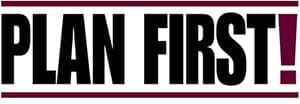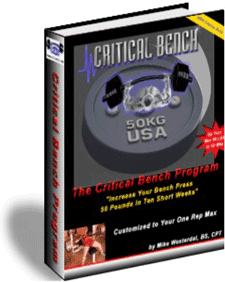
As the information of training, bodybuilding, strength training, whatever you may call it continues to grow EVERY DAY- One may ask themselves.. Where do I begin??
One motto I like to go is KISS- Keep It Simple, Stupid!
Okay, that may come off as a little harsh, but you get the idea? Basic movements have been shown time and time again to achieve proven RESULTS! None of this frilly, foo-foo gym equipment; none of this balancing on a stability ball with a 2-lb pink dumbbell in one hand while talking on the cell phone in the other.
Listen, if you are after RESULTS! Then I'm POSITIVE you've come to the right place. Take a moment and read what Zach Even-Esh has to say about training with the basics!
Enjoy! If you have any questions, please feel free to comment below!
Carry Like Crazy! By Zach Even – Eshhttp://tinyurl.com/67lub2The simplest movements can often yield the most powerful results. Is this why I never saw anyone doing farmer walks with the 180 lb dumbbells at some gyms I’ve been to?
Or heavy rack pulls, heavy squats, heavy military presses (standing not seated) or heavy barbell rows?
These movements pack on the real muscle and make you stronger than a Bull! What about farmer walks with the farmer walk bars?
I snagged a great pair of farmer handles from http://elitefts.com
I used the econo farmer bars and they arrived 2 days later! These long bars make the carries much harder and really hammer the lower body. Normally we used our 130 lb dumbbells or heavy kettlebells but these long bars were different and better for full body work!
You can also perform the other basic carries with dumbbells and sandbags. These movements will develop full body strength and you want to include these HEAVY in your workouts on a regular basis. These are the basics. After the basics you can start getting more advanced by using cross carries or mixed carries. I'm talking about zercher carries and bear hug carries using sandbags or carrying a stone around the backyard in between sets of kettlebell work.
The cross carries can be used with dumbbells, kettlebells and even sandbags. All you need to do is hold them in two different positions. This awkward loading of the body strengthens the muscles and the body from unique angles that don’t get worked through traditional movements.
some more of my favorite are rack walk + overhead carries or overhead and farmer walk mixed together.
Carrying heavy objects of any type are awesome for full body strength development and work capacity.
In addition, the first rep of every set is some form of a power clean and / or deadlift just to get the weight off the ground. Putting the weights down requires control, so no dropping, only squatting / deadlifting the weights down under control.
I’ve met some seriously strong men who never touch free weights, their strength came from manual labor carrying objects, lifting them, throwing them, power cleaning them into truck beds, etc.
The guy who used to pick up our garbage when we were remodeling our house had an old pick up truck, it seriously looked like Steve Justa’s truck!
This guy’s name was Tony. Tony picked up junk for people as a side job, but it was always heavy stuff. Odd objects that makes you stronger than a freight train.
He would pick up all our stuff: toilet bowls, dish washers, heavy contractor bags filled with sheet rock, an old deck and more! I remember talking to him about strength training (as I always did) while we were loading his pick up with 20 + bags of sheet rock. He was holding one bag with a straight arm as he causally spoke with me! I was using two arms and my entire body to heave those bags up and I was starting to sweat bullets.
Tony was used to carrying car parts, scrap metal and other seriously heavy and odd objects. Essentially, all he did was carry junk. But, remember, like I said, when you carry objects, you power clean them up / down as well as deadlift the weight up / down.
It can’t get any simpler than that!
Now it’s time you begin to carry some odd objects!
About the Author
Zach Even - Esh is a Strength & Performance Coach from Edison, NJ and is the owner of The Underground Strength Gym and creator of The Underground Strength Manual. Zach's Underground methods have spanned the globe and have helped men and women of all ages to dramatically improve athletic performance, pack on rugged muscle and develop brute strength. Zach is the Strength & Conditioning advisor for TapOuT Magazine and is also a featured writer for Men's Fitness Magazine. To learn more about Zach and his methods visit
http://tinyurl.com/67lub2


 Just 5 more minutes...
Just 5 more minutes... The Power Clean in sequence- A great lift, but highly technical!
The Power Clean in sequence- A great lift, but highly technical!















